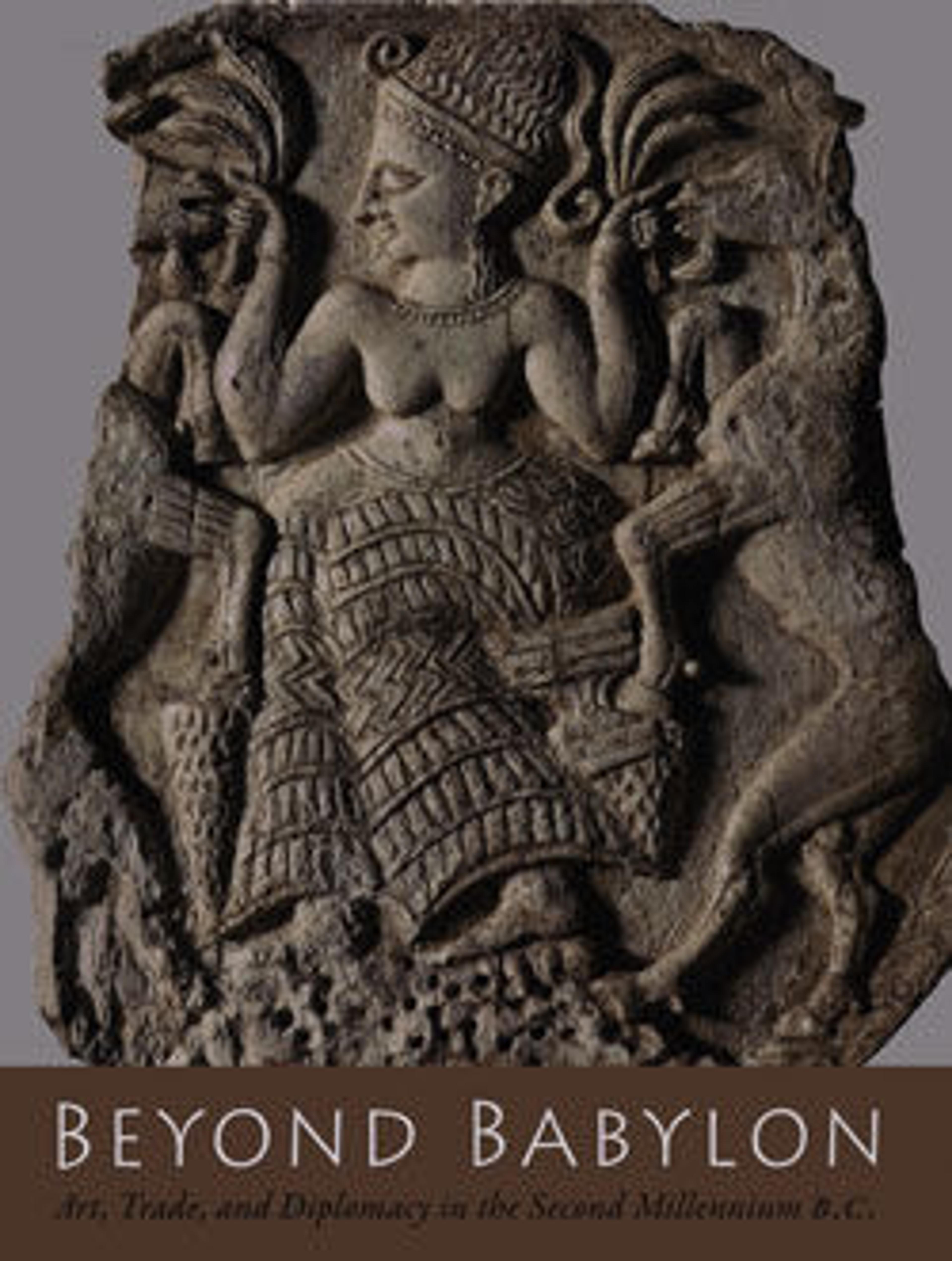Game Box for Playing Senet and Twenty Squares
The upper and lower surfaces of this box are each configured for a different board game. The side visible in this photograph has twenty squares for a game that was introduced into Egypt from the Ancient Near East. The other side has thirty squares for the Egyptian game known as Senet. These were both games in which two players raced each other for position, using knucklebones or throw sticks as dice to determine each play. For this game box, eight of the original gaming pieces and two bones are preserved. The pieces would have been stored in a drawer that could be closed with an ivory bolt.
Only the ivory sections of the box, the ivory bolt, and the copper alloy bands used to hold the bolt in place were preserved when the box was discovered. It has been restored using modern wood.
Two other game boxes may be seen in galleries 117 and 118. A facsimile of a scene in the tomb of Nefertari in the Valley of the Queens depicts the queen playing senet in the afterlife.
Only the ivory sections of the box, the ivory bolt, and the copper alloy bands used to hold the bolt in place were preserved when the box was discovered. It has been restored using modern wood.
Two other game boxes may be seen in galleries 117 and 118. A facsimile of a scene in the tomb of Nefertari in the Valley of the Queens depicts the queen playing senet in the afterlife.
Artwork Details
- Title:Game Box for Playing Senet and Twenty Squares
- Period:Second Intermediate Period–Early New Kingdom
- Dynasty:Dynasty 17–Early Dynasty 18
- Date:ca. 1635–1458 B.C.
- Geography:From Egypt, Upper Egypt, Thebes, Asasif, Courtyard CC 41, Pit 3, Burial E 3, In coffin, MMA excavations, 1915–16
- Medium:Ivory, copper alloy, modern wood
- Dimensions:L. 25 cm (9 13/16 in.); w. 6.7 cm (2 5/8 in.); h. 5 cm (1 15/16 in.)
- Credit Line:Rogers Fund, 1916
- Object Number:16.10.475a
- Curatorial Department: Egyptian Art
More Artwork
Research Resources
The Met provides unparalleled resources for research and welcomes an international community of students and scholars. The Met's Open Access API is where creators and researchers can connect to the The Met collection. Open Access data and public domain images are available for unrestricted commercial and noncommercial use without permission or fee.
To request images under copyright and other restrictions, please use this Image Request form.
Feedback
We continue to research and examine historical and cultural context for objects in The Met collection. If you have comments or questions about this object record, please contact us using the form below. The Museum looks forward to receiving your comments.
